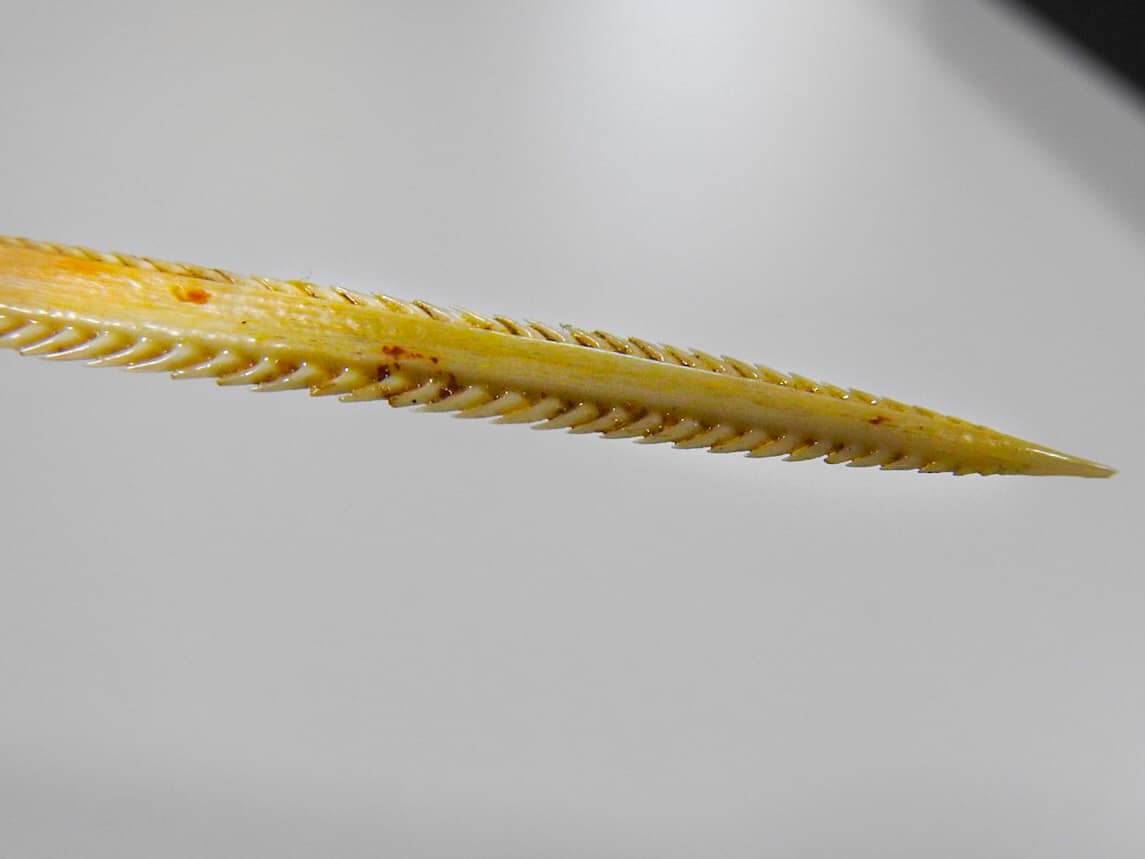
The Stingray Spine.
In Australian seas there are about 50 species of rays that have tails armed with spines.
Of these, 21 occur in coastal waters of Queensland. Most species are found on the seabed, on sandy or muddy substrate, but a few are found higher in the water column inshore with the rising tide to feed on yabbies, worms, small fishes and crabs. Numerous circular depressions through out tidal flats at low tide are a tell-tale sign of feeding activities of rays.
Divers often encounter variously species of rays, some of which may reach up to 2m in diameter. Most rays will flee if a diver approaches too closely, however large individuals in particular should be given a wide berth and no attempt should be made to grab or touch any ray.
The stingray’s spine, or barb, can be ominously fashioned with serrated edges and a sharp point. The underside may produce venom, which can be fatal to humans, and which can remain deadly even after the stingray’s death.

